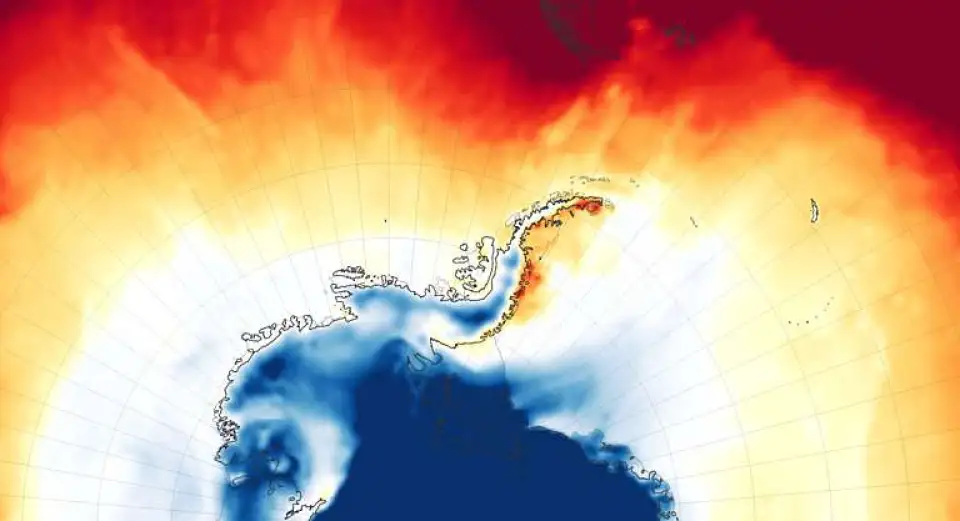
Last August, Harding Heights, a Passive House multifamily building designed for seniors, opened its doors in Smithers, British Columbia. Although Smithers is located pretty far north, almost immediately the residents started complaining about overheating, says Monte Paulsen, Passive House specialist at RDH Building Science and the consultant on this project.
The superficial reason was evident—an unusual heat wave. Digging a little deeper, though, several factors had contributed to the summertime discomfort in this multifamily building, including the installation of windows with a solar heat gain coefficient (SHGC) of .61 rather than the specified .36 (see “Cautionary Tales in Overheating”). Another factor that likely came into play is the very real probability that the climate has warmed noticeably compared to the climate files used to model the building in the PHPP.
Each Passive House building is designed for the specific climate where it will be located, and that climate’s parameters are averages based on 10 to 30 years of actual weather data. As Jessica Grove-Smith, PHI researcher, says, past data are known quantities. Forecasts have uncertainties. “By designing a Passive House based on reliable past data, you are making a huge improvement compared to not building a Passive House,” says GroveSmith. “Passive House buildings are more resilient when it comes to comfort and energy impacts than conventional buildings are.” Still, the climate is changing quickly, and overheating can be the most evident impact in many locales.
For a superinsulated building that already has a heating-and-cooling system, small shifts of up to 5 kWh in cooling loads as temperatures warm aren’t crucial, GroveSmith points out. What is crucial is deciding whether cooling is needed or not. “We are at the point where the focus is on stress testing for summer comfort,” she says.
To help with this effort, PHI has created a summer temperature tool to modify existing PHPP climate data for the summer months. This tool, which will be made available to all PHPP users, can be used to test a building’s comfort during projected summer conditions and for inner-city locations likely to experience urban heat island effects. Addressing the basic design influences on summer comfort, including shading and night ventilation, is always the best starting strategy, Grove-Smith emphasizes.
“Assumptions on user behavior have to be realistic, and the design should allow for some leeway for coping with heat waves and warming temperatures,” she adds.
Another strategy would be running a PHPP variant model with yearlong forecasted climate data. Meteonorm sells PHPP-ready future climate files, says Paulsen. Alternatively, free climate data can be obtained from a number of sources, such as the Canadian government or Intergovernmental Panel on Climate Change climate modelers in your region, but the data won’t be formatted for easy input into a PHPP model. To use these sources, you would have to average the generally 30-year series of forecasted monthly data to create one temperature for each month. Then subtract the baseline predicted monthly temperature from the forecasted monthly average to arrive at the difference, or delta, between the two. Finally, add that delta to the PHPP’s monthly temperatures. This approach will not calculate load data, while Meteonorm does have prepared load data.
Beyond these climate data approaches, Paulsen has started running the buildings he consults on through a series of additional stress tests. The scenarios he has been testing in the PHPP can include removing all horizon shading, eliminating nighttime flushing, lowering ventilation rates, and anticipating possible change orders. Grove-Smith says that PHI is looking at incorporating stress testing into the next version of the PHPP so that designers immediately get feedback on summer comfort risks while fleshing out their models.
For help with the finer points of designing for warming climates, the international Passive House community is a huge asset. The PHI addresses summer comfort issues in more detail here. The Passivhaus Trust in the United Kingdom has developed a technical guidance document on summertime comfort, which is available here. And Passive House consultants in such locales as Spain, Greece, and China have plenty of experience that can be accessed via the International Passive House Association. Grove-Smith concurs, saying, “There’s an opportunity to feed into the global network, talking to people in hot climates who have been looking at the question of efficient cooling for some time.”
Cautionary Tales in Overheating
Summertime comfort at Harding Heights had been designed in, using the usual palette of passive strategies. Unfortunately, many of those strategies were inadvertently thwarted. As we have seen, the installed windows’ SHGC was .61, not the specified .36. Further aggravating the summer solar heat gain, the forecasted shading provided by a large deciduous tree on the south-facing façade was eliminated when that tree was cut down during construction. And for a near-perfect storm, none of the residents wanted to open the windows at night to flush the building, because the new bug screens didn’t fit properly, and August is a prime season for blackflies. Although it’s impossible to avoid all errors, one often-overlooked technique could have provided some sweet relief—built-in exterior shading. As Monte Paulsen points out, European Passive House buildings include exterior shading to a much greater degree than do North American ones. As screening out sun becomes increasingly important, so does embracing the range of exterior shading options—from fail-safe to flexible.
Another factor that deserves scrutiny is the question of internal heat gains (IHGs) in North American residential units. “In my personal observation, people who live in small suites or apartments plug in nearly as many personal devices per capita as people who live in large houses,” says Monte Paulsen. “If this is true, PHPP may be underestimating IHGs significantly in smallsuite multiunit buildings.” PHI and ZEBx, a Canadian organization that serves as a center of excellence for training about zero emissions building, are studying this question, with results promised for later this spring.